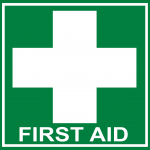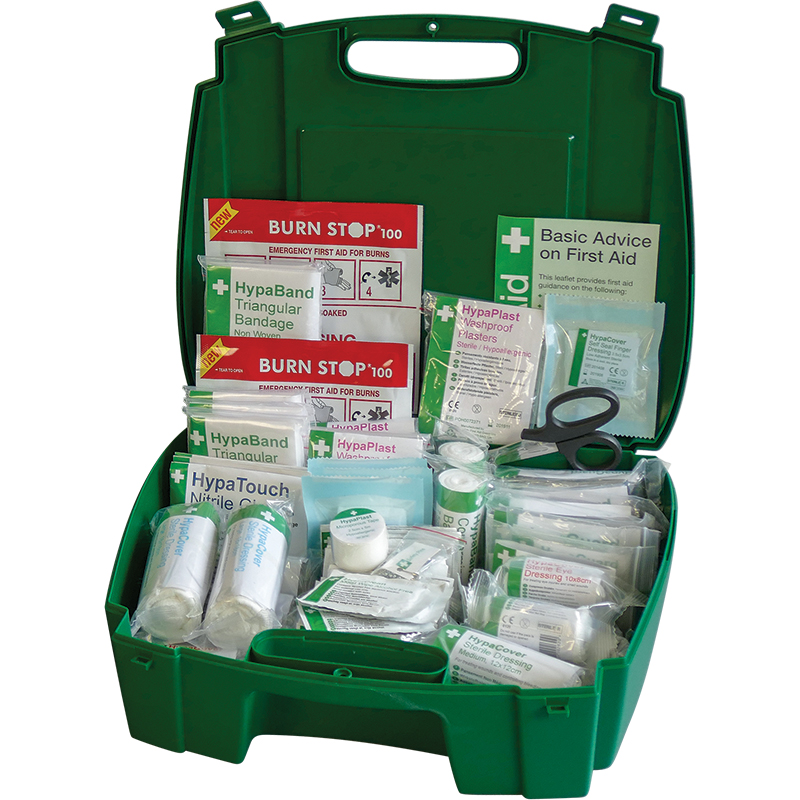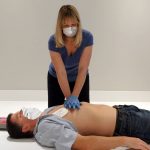All employers, no matter what size of business or what kind of activities they carry out, have a duty to provide first aid care to look after their workers if they are taken ill or have an accident in the workplace.
The Health and Safety (First Aid) Regulations 1981 says that employers need to have adequate and appropriate facilities, people and equipment in place to give immediate and effective assistance if somebody is taken ill or is injured. You also have a duty to tell your workers about the first aid arrangements in place in their workplace.
But how do you know what is ‘adequate and appropriate’ first aid provision? First aid needs will be different for all workplaces, depending on a number of factors.
As with all things Health and Safety, it all starts with an assessment – your first aid needs assessment.
What is a First Aid Needs Assessment?
The number of first aiders for your workplace, the type of training they need, and the equipment and facilities you need to make available all depends on the risk and accident profile for the workplace. A chemical plant that uses hydrofluoric acid in the processes will have a different first aid needs to an office environment where you are more likely to have a paper cut than a chemical burn.

By carrying out a first aid needs assessment, you will look at all factors that might influence the nature of incident you may face, the people and available to help and the help available from outside sources such as emergency services.
Factors to consider include:
- nature of work, hazards, and risks
- accident and illness history of the organisation
- the people in your organisation (e.g., age profile, known vulnerabilities and special medical needs)
- size of your organisation
- shift / working patterns
- annual leave or absence of first aiders or appointed persons
- the needs of people who travel for work
- other people who may work on your site, in particular contractors or if you work in a shared space
- provision for non-employees
- time taken for emergency help to be summonsed and response times of emergency services
There is no legal requirement to keep documented records of your first aid needs assessment, but you may find it useful to do so.
How many First Aiders do we need?
How many first aiders you need in your workplace will depend on the outcomes of your needs assessment.
There are no set rules for the number or type of first aiders (yes, there are different types!), it all depends on your specific circumstances and the availability of those people in your workplace who are designated first aiders.
HSE guidance gives suggested numbers of first-aid personnel who should be available at all times that people are at work. This is guidance only, and you may need more than is suggested in this table.

If your needs assessment shows that first aiders are not needed in your workplace, you must as a minimum have an Appointed Person. The role of the Appointed Person is to take charge of first aid arrangements, ensures facilities and equipment are available and calls emergency services when required (though of course, anyone can and should call the emergency services when needed – don’t put off calling for an ambulance just because the Appointed Person is in the loo!).
If you do need first aiders, you will need to consider whether you need them to be Emergency First Aid at Work (EFAW) trained or fully First Aid at Work (FAW) trained. Typically, for lower hazard workplaces with fewer than 50 people you will need at least 1 EFAW trained person, and for higher hazard workplaces with 50+ people you will need 1 or more FAW trained people.
What training should our First Aiders have?
A four-layer framework for first aid training has been around for many years. This is an optional framework, but it is used commonly across the vast majority of businesses in the UK.
Details of the first aid training framework is given in the table below:
| Appointed Person (AP) | no formal training requirements. Courses are available for Appointed Persons and they must be familiar with the workplace and arrangements to manage emergencies. |
| Emergency First Aid At Work (EFAW) | one day training course, suitable for first aiders in lower risk workplaces. Training courses must meet the requirements set out in Appendix 6 of L74 First Aid at Work guidance. Training certificates are valid for 3 years, and once the certificate expires the person is no longer permitted to be a first aider without repeating the course in full. |
| First Aid at Work (FAW) | three-day training course, suitable for first aiders in higher risk, larger workplaces. Training courses must meet the requirements set out in Appendix 5 of L74 First Aid at Work guidance. Training certificates are valid for 3 years, and once the certificate expires the person is no longer permitted to be a first aider without either completing a requalifying course or repeating the course in full. |
| Additional training | where workplaces have particular hazards and risk factors, then additional training to take those particular needs into account will be needed. This may be done by a specialist first aid training provider who has developed a bespoke training programme to meet the organisations needs or be delivered in-house by somebody who is competent to deliver and assess the effectiveness of the training. |
Many first aid training providers offer Ofqual regulated qualifications that meet the requirements set out in L74.
Danum Business Solutions partners with Pochat Training for the delivery of First Aid at Work training.
What First Aid Facilities do we need to provide?
Again, the answer to this question will be determined by your first aid needs assessment. For low hazard workplaces like offices, an off-the-shelf first aid kit will be suitable. For higher hazard workplaces you will need to determine what might be needed in an emergency depending on what might go wrong, what treatments are likely to be needed and how many people you are may need to treat. Additions to your basic first aid kit might include things like foil blankets, haemostatic dressings, tourniquets, sterile solution, and so on.

All workplaces must have at least one basic first aid kit, more if your needs assessment shows they are needed.
Your first aid kits should be suitably marked and easily accessible. They should be in places where accidents are most likely to occur, and protected from dust, damp, and other potentially damaging environments, and preferably close to hand washing facilities.
Where your needs assessment shows it is necessary, you will need to provide a dedicated First Aid Room. These are typically needed in high hazard industries such as the chemical industry, construction sites or in large workplaces. Where needed, your first aid room should contain all the essential facilities and equipment, be easily accessible by stretchers, be clearly signposted and identifiable, and have a designated person responsible for looking after the room.
A note about self-employed people and micro-businesses using shared premises.
If you are self-employed and there is only you in your business, you still need to make sure you have a first aid kit so that you can provide first aid to yourself while at work. This might be as simple as buying a standard first aid kit, making sure you keep it fully stocked and accessible, and a working mobile phone so that you can call to summon help in an emergency.
If you travel around for your work, for example a trades person working out of their van, you need to carry a first aid kit in the vehicle – preferably clearly labelled, visible and easy to get to in an emergency.
If you are working in shared premises, like a co-working space, then it might be sensible to make joint arrangements for first aid provision with others in the same space.
One business may take the lead in making sure there is adequate first aid provision for everyone who uses the premises, however you remain legally responsible in ensuring those arrangements are in place. In other words, if you’re working in a co-working space, don’t assume you’ll be ok – check out what arrangements there are for first aid and if there aren’t any you need to make your own.
What about First Aid at Work during the Covid-19 pandemic?
Covid-19 has changed a lot of workplaces, and the first aid provision should be reassessed to reflect those changes.
All workplaces should revisit their first aid needs assessment to see if any changes in the workplace have affected the outcomes of the assessment.
Employers should talk with the first Aiders and ask if there are any factors that need to be taken into consideration that affects their ability to deliver first aid and take any particular vulnerabilities into account.
First Aiders should continue to give help when needed, but they need to maintain distance from the injured person where possible and minimise the time shared in their breathing zone. As with all first aid situations, excellent standards of hygiene must be maintained.

CPR guidance from the Resuscitation Council UK was changed at the onset of the pandemic to omit the use of rescue breaths. First Aiders should use compression only CPR, further details can be found on the Resuscitation Councils Website.
If you found this useful, then why not sign up to my weekly H&S roundup to get updates, news and tips from the world of health and safety direct to your inbox.
Want to learn more about First Aid at Work or help with your needs assessment?

